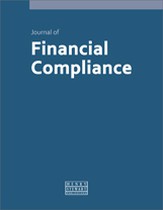Challenges of competent authority’s AML/CFT risk assessments in practice: No common standard
Abstract
This paper reveals one of the challenges that Competent Authorities face in performing AML/CFT risk assessments, namely a lack of Common Standard, and identifies the benefits which could be achieved if a risk assessment standard were in broad usage. A standardised AML/CFT risk model that is scalable across sectors and across jurisdictions should have significant near-term and long-lasting advantages and efficiency gains for AML/CFT stakeholders such as supervisors, policy making bodies, reporting entities and SupTech developers. Moreover, global objectives could be achieved such as a worldwide increase of compliance and effectiveness related to the FATF standard, Recommendations 26 and 28 and Immediate Outcome 3. The paper then continues to outline the assumptions and objectives which should be used in forming such a standard and provides an early suggestion for consideration, identifying the pros and cons. The suggested method involves the determination of a sector profile level which would be considered an indication of the probability of ML/TF/PF occurring in a sector. The sector profile categorisation is based on a sector’s complexity, transparency, sophistication and the presence of high-risk activities, to which the assigned level dictates a commensurate number and intensity of risk factors and controls factors that should be present in an AML/CFT risk model. The formation of an AML/CFT risk assessment standard is recognised as a challenging feat and this work aims to form a discussion piece around the topic.
The full article is available to subscribers to the journal.
Author's Biography
Garrett Dunker is the Managing Director of FTS Financial Transparency Solutions GmbH and oversees development of SupTech solutions for Supervisors, such as Strix AML, that performs risk assessments, improves compliance with regulatory standards and provides recurring savings through automation. Since 2016, Garrett has participated in AML/CFT risk modelling at the technical level, been involved in risk algorithm detailed calculations, risk model design, modelling best practices, removal of modelling waste, improving data quality and incorporating modern elements of machine learning. Leveraging experience from previous Excel-based risk models and other risk model software, Garrett has designed an efficient and powerfulyet-flexible scoring algorithm for Strix AML. Garrett manages a team of developers to design software products while strategically up-valuing the tools by organising intensive peer reviews from expert supervisors, engaging 3rd party developers for review of software quality and security and incorporating a constant feed of client feedback. Garrett’s engineering background includes a heavy focus on testing and data collection, data management and in creating algorithms to automate data reduction and predict results. Garrett has studied Macroeconomics and Mechanical Engineering at Arizona State University and has received a BS in Mechanical Engineering.
